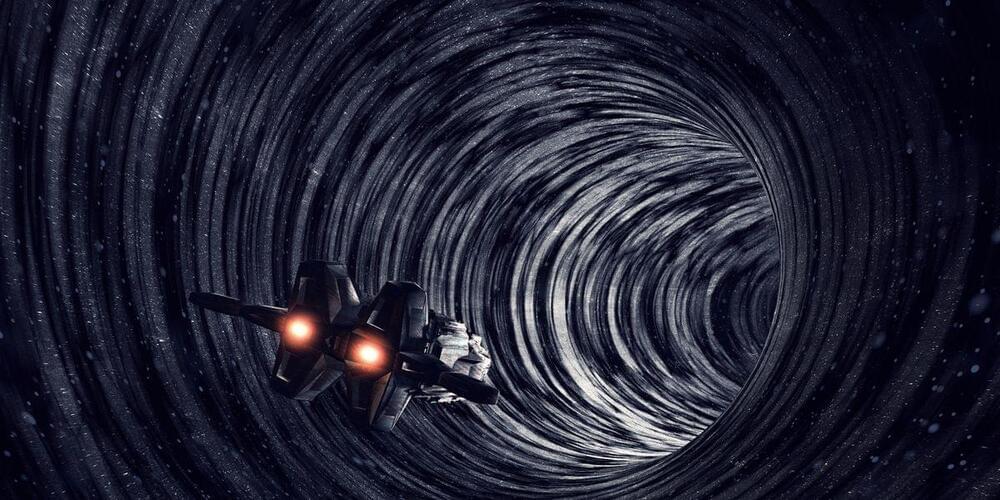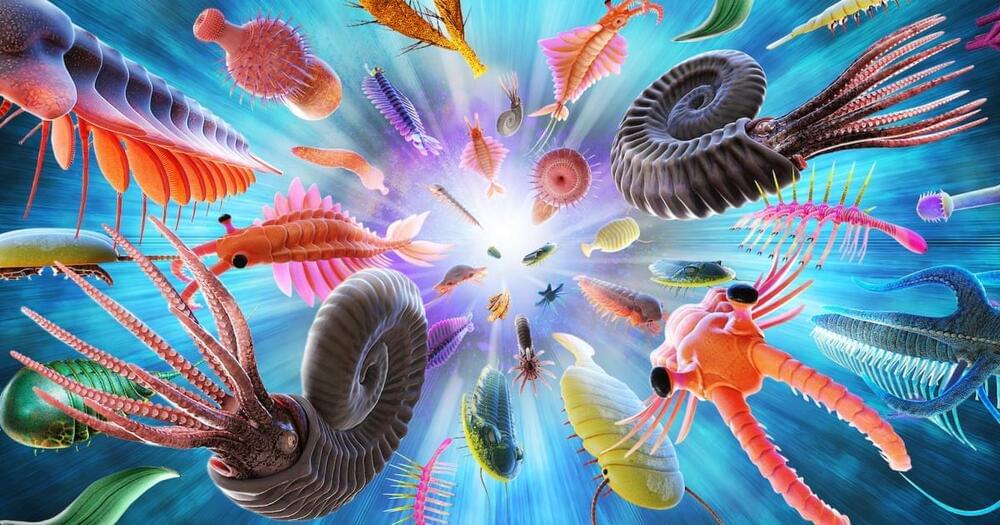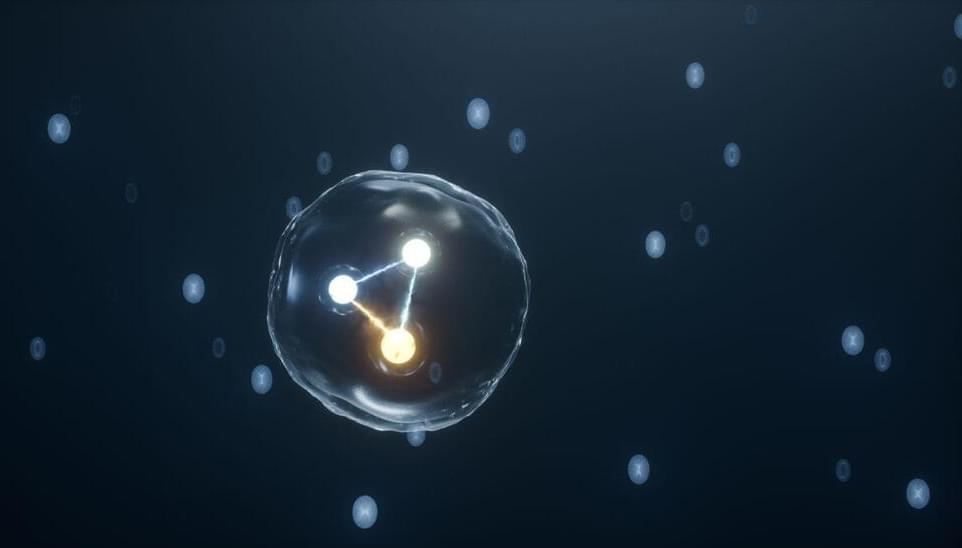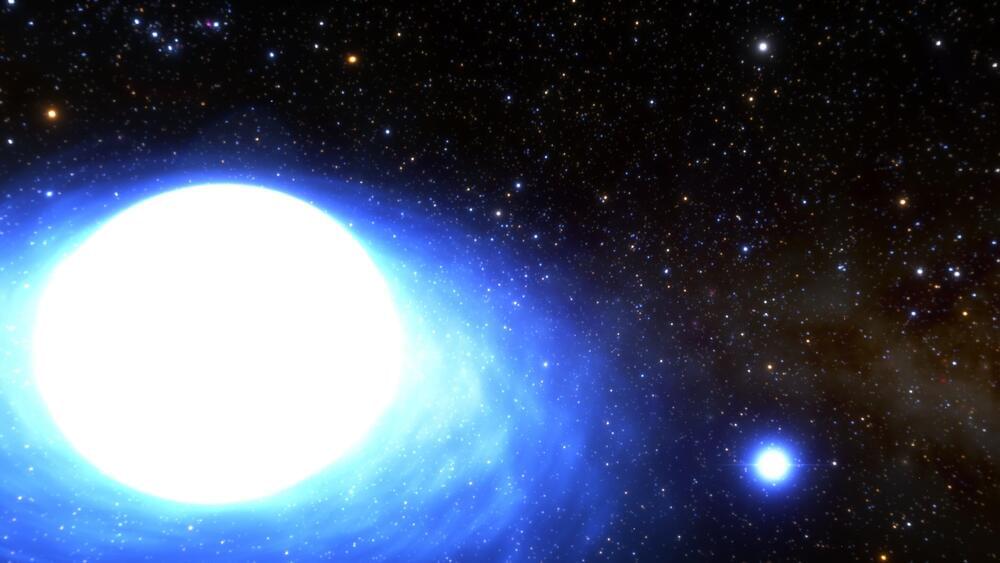Probably not but who knows in a million years?
Whether other universes are membranes floating in space, or a quirk of quantum mechanics, this is how physicists think we’ll traverse the multiverse.

https://youtube.com/watch?v=V8cPdjO3a_U&feature=share
Find out what the world will be like a million years from now, as well as what kind of technology we’ll have available.
► All-New Echo Dot (5th Generation) | Smart Speaker with Clock and Alexa | Cloud Blue: https://amzn.to/3ISUX1u.
► Brilliant: Interactive Science And Math Learning: https://bit.ly/JasperAITechUniNet.
Timestamps:
0:00 No Physical Bodies.
1:51 Wormhole Creation.
2:44 Travel At Speed Of Light.
3:21 Type 3 Civilization.
4:52 Gravitational Waves.
5:46 Computers the Size of Planets.
6:56 Computronium.
I explain the following ideas on this channel:
* Technology trends, both current and anticipated.
* Popular business technology.
* The Impact of Artificial Intelligence.
* Innovation In Space and New Scientific Discoveries.
* Entrepreneurial and Business Innovation.
Subscribe link.
https://www.youtube.com/channel/UCpaciBakZZlS3mbn9bHqTEw.
Disclaimer:
Some of the links contained in this description are affiliate links.
As an Amazon Associate, I get commissions on orders that qualify.
This video describes the world and its technologies in a million years. Future technology, future technologies, tech universe, computronium, the world in a million years, digital immortality, wormhole, wormholes, faster than light, type 3 civilization, control gravity, planet sized computer, black hole energy extraction, black hole, black hole energy, and so on.

Evolution’s rapid pace after the Cambrian explosion
Though the work of Schopf and other paleobiologists continues to fill in the Precambrian fossil record, questions remain about the pace of the Cambrian explosion. What triggered life to evolve so fast?
The question has intrigued scientists of many disciplines for decades. Interdisciplinary collaboration has wrought a wealth of evidence from diverse perspectives — geochemical, paleoenvironmental, geological, anatomical, and taxonomic — that describes how biological organisms evolved in concert with changing environmental conditions.
Three years ago, the study of black holes was revolutionized. Now, the team is turning to the closest supermassive black hole to Earth — the one at the center of the Milky Way.

Dark photons, a hypothetical form of dark matter, could explain the heating discrepancy in intergalactic gas. Read on to discover the exciting potential of dark photons in explaining the mysteries of the universe!

After crunching a mountain of astronomy data, Clarissa Pavao, an undergraduate at Embry-Riddle Aeronautical University’s Prescott, Arizona campus, submitted her preliminary analysis. Her mentor’s response was swift and in all-caps: “THERE’S AN ORBIT!” he wrote.
That was when Pavao, a senior space physics major, realized she was about to become a part of something big—a paper in the journal Nature that describes a rare binary star system with uncommon features.
The paper, published on Feb. 1, 2023, and co-authored with Dr. Noel D. Richardson, assistant professor of Physics and Astronomy at Embry-Riddle, describes a twin-star system that is luminous with X-rays and high in mass. Featuring a weirdly circular orbit—an oddity among binaries—the twin system seems to have formed when an exploding star or supernova fizzled out without the usual bang, similar to a dud firecracker.

Think of bringing a pot of water to the boil: As the temperature reaches the boiling point, bubbles form in the water, burst and evaporate as the water boils. This continues until there is no more water changing phase from liquid to steam.
This is roughly the idea of what happened in the very early universe, right after the Big Bang, 13.7 billion years ago.
The idea comes from particle physicists Martin S. Sloth from the Center for Cosmology and Particle Physics Phenomenology at University of Southern Denmark and Florian Niedermann from the Nordic Institute for Theoretical Physics (NORDITA) in Stockholm. Niedermann is a previous postdoc in Sloth’s research group. In this new scientific article, they present an even stronger basis for their idea.

Scientists have made one of the most precise maps of the universe’s matter, and it shows that something may be missing in our best model of the cosmos.
Created by pooling data from two telescopes that observe different types of light, the new map revealed that the universe is less “clumpy” than previous models predicted — a potential sign that the vast cosmic web that connects galaxies is less understood than scientists thought.
According to our current understanding, the cosmic web is a gigantic network of crisscrossing celestial superhighways paved with hydrogen gas and dark matter. Taking shape in the chaotic aftermath of the Big Bang, the web’s tendrils formed as clumps from the roiling broth of the young universe; where multiple strands of the web intersected, galaxies eventually formed. But the new map, published Jan. 31 as three separate studies in the journal Physical Review D, shows that in many parts of the universe, matter is less clumped together and more evenly spread out than theory predicts it should be.
The big bang theory explains the beginning of our universe. But could the entirety of our universe be inside a black hole?
Theoretical physicist Brian Greene explains this bizarre hypothesis in cosmology.
The idea that our universe may be entirely contained within a black hole is a mind-bending concept that has been explored by physicists for decades.
This hypothesis draws upon both general relativity and quantum mechanics, and could provide answers to some of the most perplexing questions in cosmology, such as the origin of the universe and the source of dark energy.
But, are there any observable effects that could indicate that our universe is inside of a black hole?
Virtually all cosmologists and theoretical physicists endorse the idea that the universe emerged during a single moment some 13.8 billion years ago.